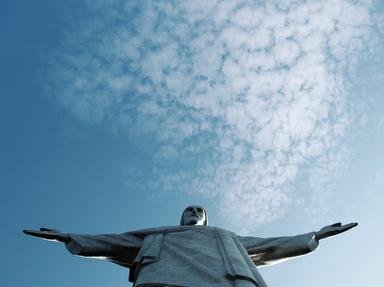Quiz Answer Key and Fun Facts
1. Before the Spanish arrived, the native inhabitants of Cuba were mostly composed on Taino and Ciboney, who were part of which larger group?
2. Between Columbus' arrival in 1492 and 1529, the indigenous population of Cuba was reduced to a small fraction of its original 350,000. That was primarily due to which two diseases brought in by the Spanish?
3. The Spanish quickly brought in slaves from Africa to toil on farms, a situation that would last for over 300 years. What crop was the main export at the time and the reason for needing so many slaves?
4. Between 1662 and 1762, one European country conducted several campaigns against Spanish Cuba, in an almost successful attempt to wrest control of the island from Spain. Which one was it?
5. The 19th century saw several rebellions, often led by slaves, aiming at achieving Cuban independence from Spain. This was finally achieved in 1898, but not reaching full Cuban independence. What did the island become instead?
6. With the 1898 struggle not achieving full independence, the question remains of when Cuba actually became independent. When was that?
7. Fulgencio Batista y Zaldívar became president of Cuba twice, in 1940 and 1952. How did he come to power in each case?
8. By 1958, Batista had not only exhausted the patience of his own population but that of the United States as well and loyalties switched to the side of a rebellion led by a certain Fidel Castro. In his resistance and ultimately successful coup, Castro was actively supported by which other notable communist?
9. In 1961, the Bay of Pigs invasion was a disastrously failed attempt to wrest control of Cuba back from Fidel Castro, initiated by the United States. To what extend did US military personnel (not counting CIA or other non-military agencies) get involved as combatants in the actual invasion?
10. Beginning with the dissolution of the Soviet Union, the Cuban communist regime did encounter significant economic troubles, having lost its main trading partner. What official name did the Cuban government give this time?
Source: Author
WesleyCrusher
This quiz was reviewed by FunTrivia editor
gtho4 before going online.
Any errors found in FunTrivia content are routinely corrected through our feedback system.
